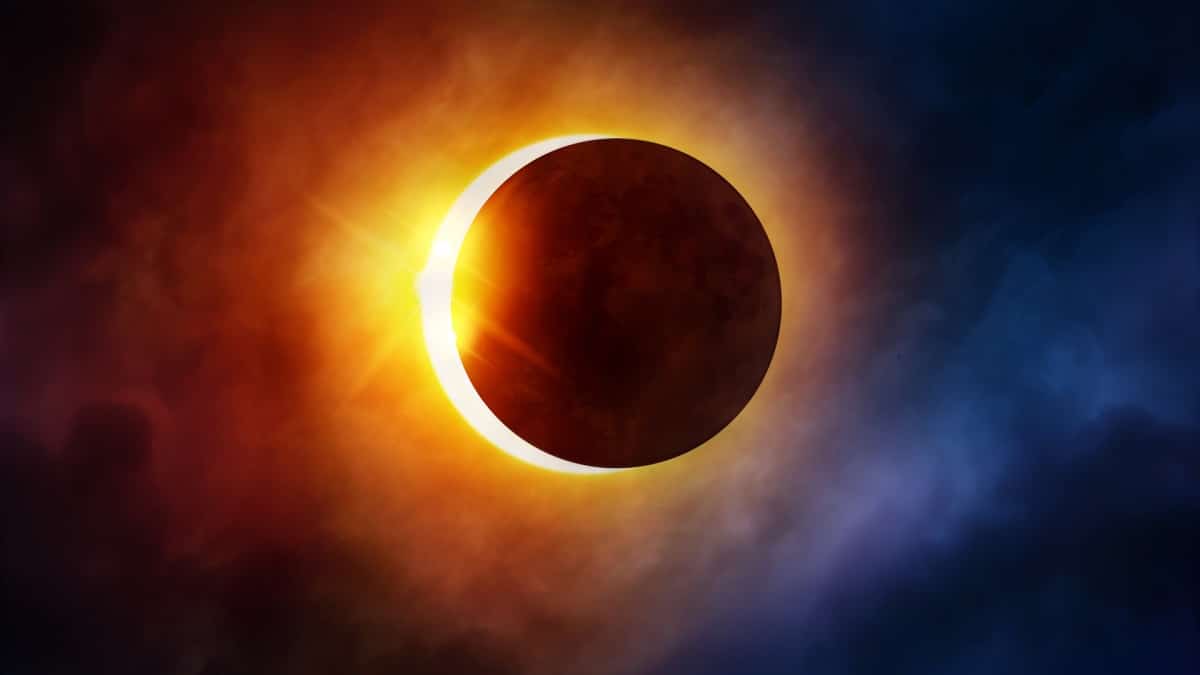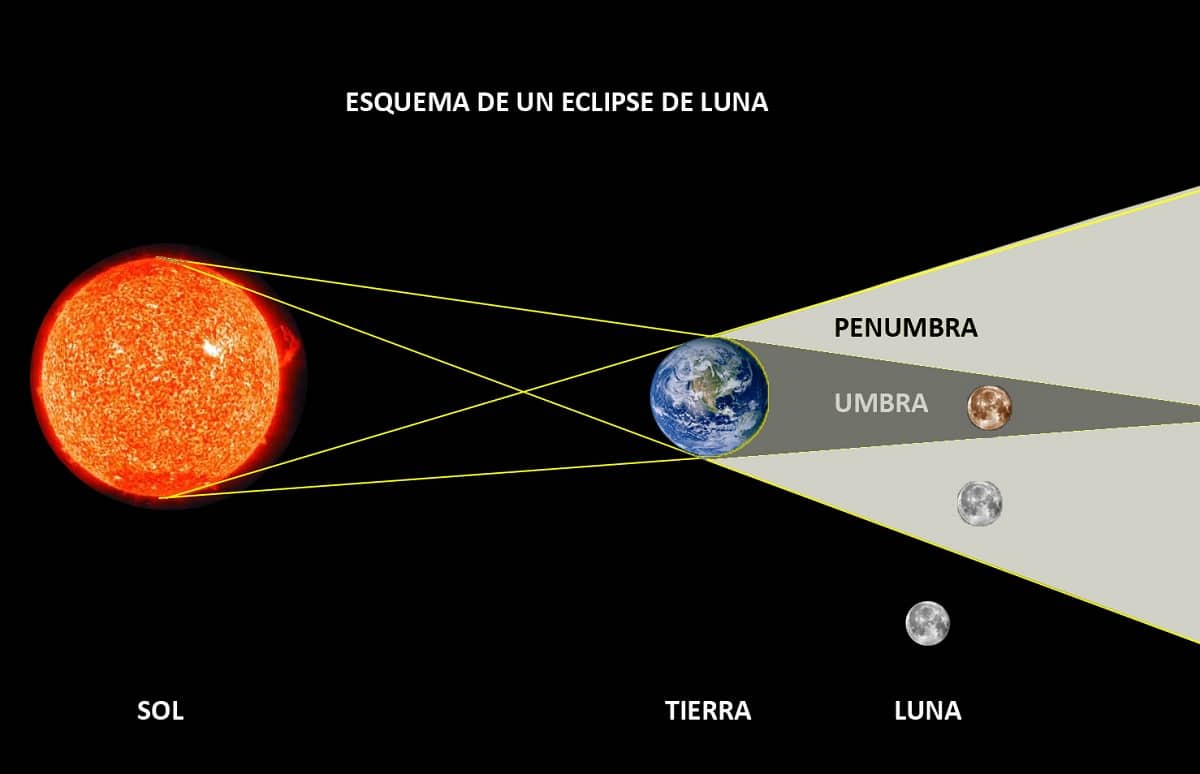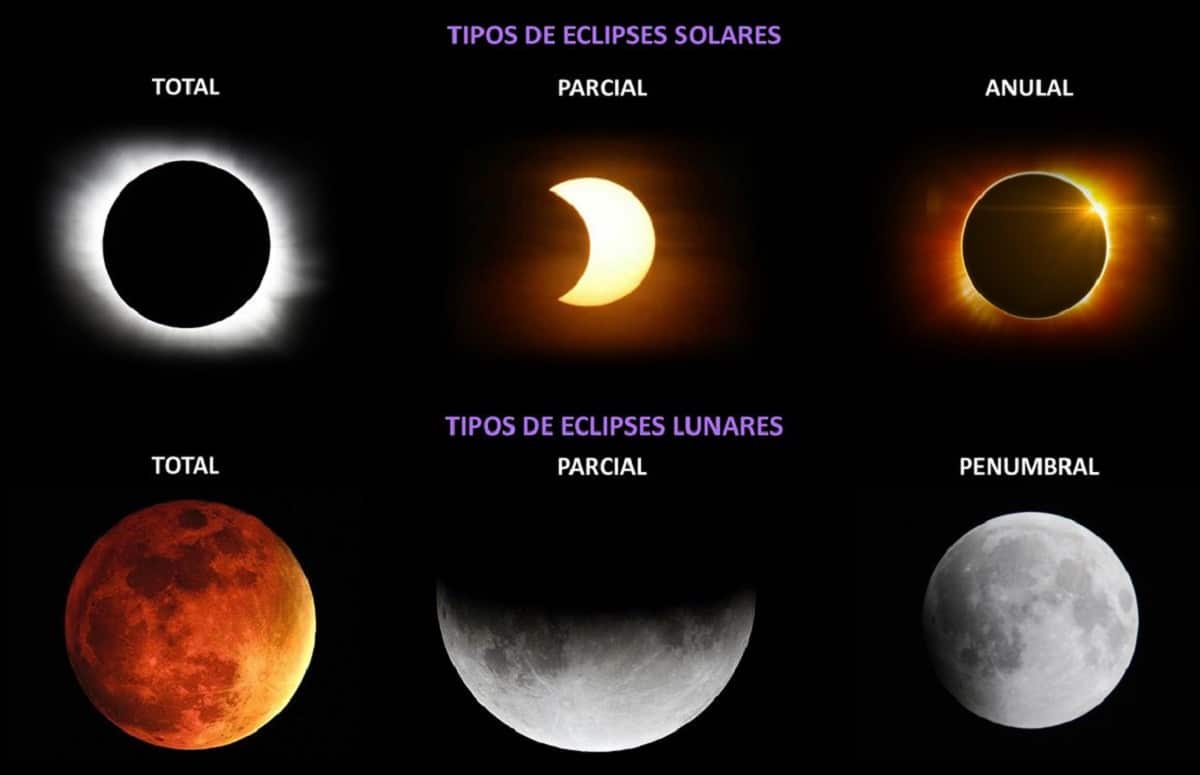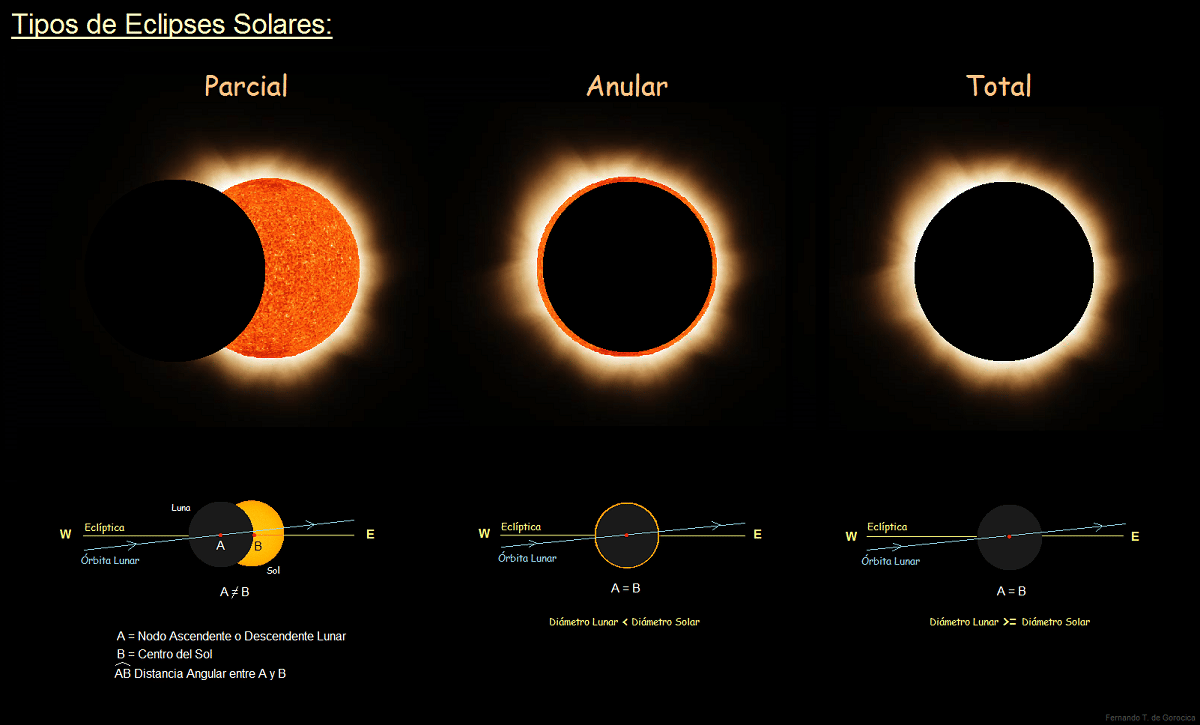
Human beings have always been fascinated by eclipses. They are phenomena that occur rarely but are of great beauty. There are different types of eclipses, more than people imagine, since it is reduced to the solar eclipse and the lunar eclipse. However, there are numerous variants.
In this article we are going to tell you about the main types of eclipse that exist, their characteristics and importance.
what is an eclipse

A solar eclipse is an astronomical phenomenon in which light from an incandescent body, such as the sun, is totally or partially covered by another opaque object in the path (called a solar eclipse), whose shadow is cast on Earth.
In principle, a solar eclipse can occur between any group of stars as long as the aforementioned dynamics and light interference occur. However, since there are no observers outside of Earth, we generally talk about two types of eclipses: a lunar eclipse and a solar eclipse, depending on which celestial body is obscured.
Solar eclipses have fascinated and disturbed humans since time immemorial, and our ancient civilizations have seen signs of change, disaster, or rebirth in eclipses, if not omens then. as most religions worship the sun in one form or another.
However, these phenomena were understood and predicted by ancient civilizations endowed with astronomical knowledge because they studied the recurrence of stellar cycles in various calendars. Some of them began to use them to distinguish political, religious or social eras or epochs.
Why do solar eclipses occur?

During a lunar eclipse, the shadow cast by the Earth obscures the Moon. The logic of a solar eclipse is simple: a celestial body stands between us and some source of light, creating a shadow that sometimes blocks most of the glare. This is similar to what happens when we walk across an object in front of the lights of an overhead projector: its shadow is also cast on the background.
However, for a solar eclipse to occur, a more or less precise conjunction of space elements between the Moon, the Earth and the Sun must occur, repeating every certain number of orbits. That is why they appear quite frequently.
In addition, they can be predicted with the help of computers, for example, because we know the time it takes for the Earth to go around the sun and its axis, and the time it takes for the moon to go around the Earth. During a solar eclipse, the moon is between the sun and the earth.
A solar eclipse occurs when the Moon is between the Earth and the Sun. casting its shadow over a portion of the Earth's surface, with Earth day appearing in shadow for a moment.
types of eclipses

A solar eclipse can only happen during a new moon, and it can happen in three different ways:
- Partial eclipse. The moon partially blocks sunlight or the visible part of its circumference, leaving the rest visible.
- Total solar eclipse. The position of the Moon is correct so that somewhere on Earth the Sun is completely darkened and a few minutes of artificial darkness are created.
- Annular eclipse. The Moon coincides with the Sun in its position, but does not completely cover it, leaving only the corona exposed.
Solar eclipses are very frequent, but they can only be seen from certain points on the ground because the moon is so much smaller than the earth. That means some sort of solar eclipse can be seen in the same location every 360 years.
lunar eclipse
During a lunar eclipse, the Earth is between the Sun and the Moon. Unlike a solar eclipse, a lunar eclipse occurs when the Earth is between the Moon and the Sun, casting its shadow on the Moon and darkening it a bit, always from a point on the ground.
The duration of these eclipses is variable, depending on the position of the Moon within the cone of shadow cast by the Earth, which is divided into umbra (the darkest part) and penumbra (the darkest part).
There are 2 to 5 lunar eclipses per year, which can also be divided into three types:
- Partial lunar eclipse. The Moon, which is only partly submerged in Earth's cone of shadow, appears slightly blurry or blurry only in certain parts of its circumference.
- penumbral lunar eclipse. It occurs when the Moon passes through the shadow cone of the Earth, but only through the penumbral region, the least dark region. This diffuse shade slightly obscures the view of the Moon, or it can change its color from white to red or orange. There are also cases where the moon is only partially in penumbra, so it can also be said to be a partial penumbral eclipse.
- total lunar eclipse. It occurs when the Earth's shadow completely obscures the moon, which happens gradually, moving first from a penumbral eclipse to a partial eclipse, then a total eclipse, then a partial, penumbral, and final eclipse.
venusian eclipse
While we don't usually think of it as a general solar eclipse, the truth is that other stars can get in the way and line up between Earth and the sun. This is what happens with the so-called transits of Venus, where our neighboring planet is between the Sun and the Earth. However, the great distance between Earth and Venus compared to the present Moon, combined with the relatively small size of the planet compared to ours, makes this type of eclipse rarely noticeable, covering only a small part of the terrestrial sun.
Also, eclipses of this type are very rare and repeat themselves in sequence: 105,5 years, then another 8 years, then another 121,5 years, then another 8 years, in a 243-year cycle. The last time this happened was in 2012, and the next one is expected to happen in 2117.
I hope that with this information you can learn more about the types of eclipses and their characteristics.